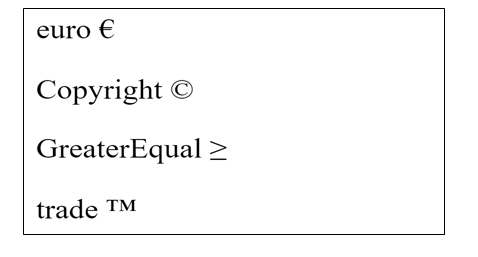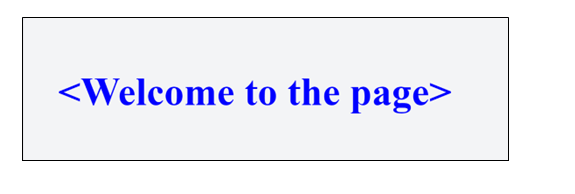Entities in HTMLWhat is Entity?A text fragment (or "string") that starts with an ampersand (&) and ends with a semicolon (;) is known as an HTML entity. Entities are widely used to show unseen characters, such as non-breaking spaces and reserved characters, which would be read as HTML code. Additionally, you may substitute them for other characters that are challenging to enter on a regular keyboard. Reserved CharactersOur browser will read some special characters as HTML code since they are reserved for usage in HTML. For instance, the browser understands any text that follows the less-than (<) sign as a tag. Replace these characters with their respective character entities as indicated in the following table to display them as text.
Implementing an EntityYou can refer to an entity by name or a numeric character reference in your HTML content. Each entity has an ampersand (&) at the beginning and a semicolon (;) at the end. Syntax: Write < or < to indicate a less than symbol (<).
The following table lists the five special characters that HTML processors must support. ExampleWe must provide the following code if you wish to write "div id = <"character"> as a code:
Example: This example displays the usage of special characters that are directly unavailable to type from the keyboard. Output: 
Benefits of HTML Entity
Disadvantages
What is Non-breaking Space?This type of space creates a line break without starting a new one. This HTML entity is represented by the character , which will divide the two words and keep them together without starting a new line. The non-breaking space can also stop browsers from truncating spaces in HTML documents. A hyphen character () that does not start a new line is called a non-breaking hyphen (). Example: 2:00 PM 300 km/h The browser will eliminate 9 of the spaces if we used to put 10 of them in our text. The character entity may be used to add actual spaces to our text. Adding Diacritical MarksA "glyph" added to a letter is a diacritical mark. Accents are diacritical symbols such as grave ( ' ) and acute ( `). It may be positioned above, below, within, or between two alphabet letters. Diacritical marks can be used with alphanumeric characters to construct a character that does not exist in the character set (encoding) used on the page. The list of diacritical marks is provided below.
Adding HTML Entities with CSS ContentHTML provides a means for displaying reserved characters. Reserved characters are those characters that are either reserved for HTML or those which are not present in the basic keyboard. For instance, the HTML language already reserves the character "." The coding often has uncertainty since this character must appear on the web page. Along with these are the characters (£, ¥, €, ©) that are typically absent from the standard keyboard. To utilize these symbols, HTML supplies some Entity names and Entity numbers. Learning entity numbers is simple. Output: 
Next TopicHTML Symbols
|
 For Videos Join Our Youtube Channel: Join Now
For Videos Join Our Youtube Channel: Join Now
Feedback
- Send your Feedback to [email protected]
Help Others, Please Share










